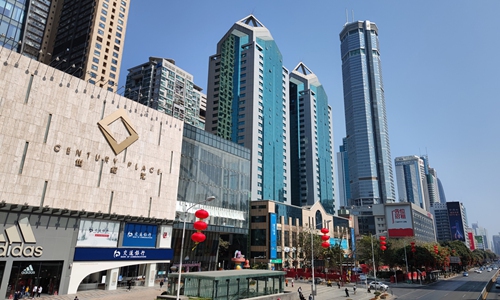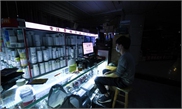Swaying skyscraper in S China’s Shenzhen caused by resonance of wind and masts: experts

People walk past the temporarily closed 300-meter SEG Plaza in Shenzhen, South China's Guangdong Province on May 24, 2021. Photo: CFP
The sideways swaying of SEG Plaza in Shenzhen of South China's Guangdong Province in May was caused by a vortex induced resonance brought by wind and aged masts of the building, and the whole structure of the building was secured and stable, experts said following an investigation.
Monitoring data showed that SEG Plaza had resonated 21 times during May 18 to 20, which was felt by the residents in the building. Experts group said the wind and the aged masts of the building, whose physical feature had changed, caused the resonances, Shenzhen Special Zone Daily reported on Thursday.
Experts group noted that even though the resonance has occurred, the whole structure of the building is safe and can be used normally. To prevent further incidents, experts group suggested to dismantling ageing masts, fixing minor damage of the building and rearranging new masts with functions of lightning protection and flight beacon.
The media reported that the SEG Plaza, a 355-meter-high iconic skyscraper in Shenzhen's Huaqiangbei, began shaking in the afternoon on May 18 and residents were temporarily evacuated and the venue was closed. However, all available data appeared normal according to experts' field investigation on May 20, after the second wobble two days later. Considering the safety issue, the SEG Plaza has been sealed off by the management since May 21.
Local government had provided additional commercial areas for tenants' normal operations during the close of the building. The government also vowed to organize tenants to move back and resume normal operation after the wobble problem is fixed as soon as possible.
Global Times


